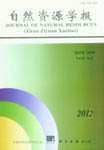Resources Utilization and Management
ZHANG Jun-hua, LI Guo-dong, NAN Zhong-ren, XIAO Hong-lang, ZHAO Li-ping
Cultivation history and cropping system are the important influencing factors of SOC and its components in the Heihe oasis, the objective of this study is to identify the effects. Soil sampling pits are selected and the space positions are determined by using the GPS instrument. The soil sampling depth of 100 cm are divided into intervals of 0-20, 20-40, 40-60, 60-80 and 80-100 cm. After soil sample preparation, total organic carbon(TOC) is measured by acid dichromate digestion and FeSO4 titration, active organic carbon(AOC) is measured by potassium permanganate oxygenation, nonactive organic carbon(NOC) is calculated as the difference between TOC and AOC. Biomass including root and crop straw is surveyed by using 1 m×1 m squares and the net weight is weighted. Cultivation history is obtained by field research. Results show the contents of TOC, AOC and NOC are increased with the extension of cultivation time, but to different degrees. AOC is faster than NOC in 0-5 years for easy transformation characters to agriculture activity after the low organic matter natural soil was converted to cotton field, then lower than NOC in 5-20 years, finally the extent of AOC is close to DOC in >100 years. This indicates NOC content significantly increased and extent of AOC and NOC is gradually close to the increase of TOC. In soil profile >100 years, the contents of TOC, AOC and NOC with the order from high to low is rape plot, general corn plot, corn plot for seed and wheat plot, respectively. Compared with annual variation of organic matter restitution in wheat and corn plots, corn plot for seed ranges between wheat plot and general corn plot. The analysis indicates planting of corn for seed causes change of TOC, AOC and NOC, and effective approach of enhancing SOC content is to increase organic matter return of straw and livestock dejection.
